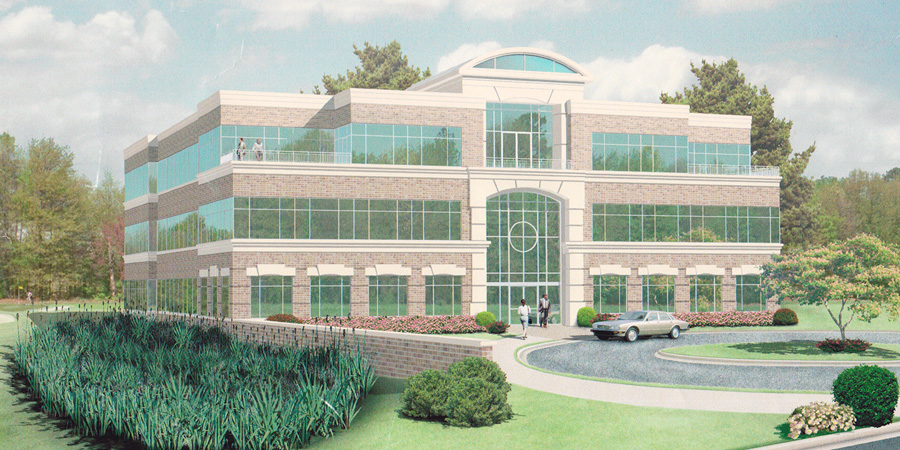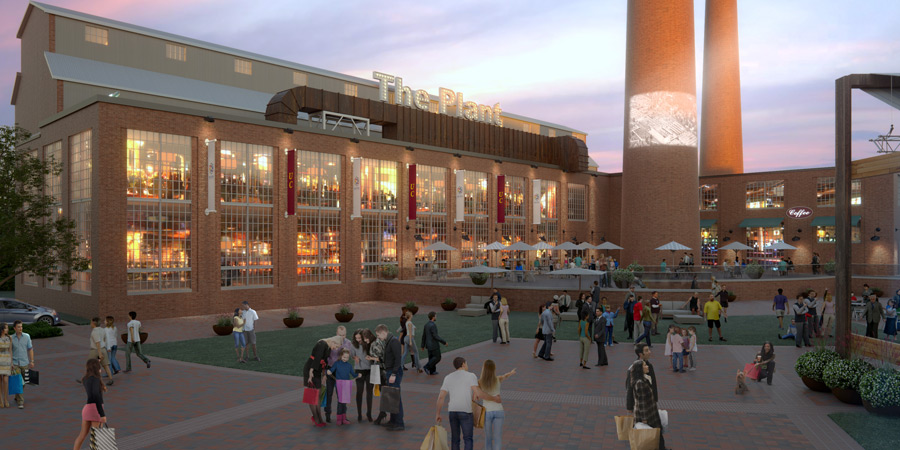Everyone loves a good story. The desire to be entertained is something people have in common the world over. With that in mind, I have heard many stories about how people came into their professions and many specific to the ArchViz industry. So, without further ado, here (in his own words) is the story of how Mike Secrist, CEO and Visualization Director at F13 Design Studio, landed in this unique world where art and science collide.
I always loved art. I learned at an early age when the other kids were still drawing stick figures and I had created realistic looking bodies with clothing and started paying attention to the nuances of facial features that maybe I had a knack for this drawing thing.
I enjoyed doing lots of activities in my childhood, not just drawing. I played cowboys and indians with the other kids. I had two brothers and I remember doing all the crazy things kids did back then. Not just the things kids did, but the things only boys did like building make shift ramps on concrete that we hoped we could successfully ride our bikes over and land upright. I loved sports too and while I never chose one specific sport to focus on, I could get by in almost anything I tried.
My dad was in the military, the Marine Corps to be exact, and that meant a whole lot of moving around. The most we ever stayed in one place was three years, but we even had a couple moves that only lasted a year. This is good, I guess, if you don’t particularly like the current location. It’s good if you don’t love the climate or the school, the kids you met there, or the tiny bedroom you’re sharing with atleast one other sibling. Needless to say this way of life made me incredibly close to my brothers. They were the only constant in my life, people that were around my age to relate to. It also lead to a lot of alone time. Let’s face it, when you’re the new kid in middle and high school and you are not the most outgoing kid in the bunch, it’s sometimes easier to do things alone. I didn’t mind it. It gave me a chance to focus more and more on my drawing which I was becoming quite good at.
If you have any experience with art, you know that as artists we notice the details. We notice the things about an object, a person, a place, that everyone else might overlook. We notice the movements of a leaf as it blows in the air. We notice the way the light bounces off someone’s skin in the location at which it hits that person’s visage. We notice the shadowing created by objects anywhere we are in the world both inside and outside. These are the things that directed my focus.
It was in highschool when I started paying more attention to the details on buildings and the materials used. Traveling around the world and living in Japan also made me realize how fascinating architecture was in this way. I can remember wanting to learn more about how buildings were constructed. I wanted as much knowledge in this arena as I could get, and so I thought that becoming an architect might be the best path for me.
By the time my senior year of high school rolled around and we moved yet again in the middle of the year, I thought I knew what I wanted to do with my life. There was only one thing holding me back – all that math. Math was not my strong suit and if I was going to enter into a major that required a lot of it, I could see potential for real problems. So I did what I thought at the time was the next best thing. The thing that would keep me away from all of that math. I became an interior design major. Yes, I made a decision to attend The Art Institute of Pittsburgh in Pittsburgh, Pennsylvania in order to study interior design. I thought I was pretty smart. My friends were attending universities and majoring in business and engineering, but not me. I discovered along the way that my strength in interior design was the illustration aspect. The part where you could sketch the interior to show what it was going to look like when it was finished, that was where I thrived.
So, I graduated with my interior design degree and started looking for work in the field of architectural renderings. A position was located for me by the people in the placement office at school and after completing a series of samples to show that I could match styles in watercolor, pen and ink, and pencil, I was hired on at a small outfit in Northern Virginia called Architectural Art. This company was hired by home builders and architects predominantly and executed floor plans, site plans, location maps, brochure layouts, interior renderings, and exterior renderings. I felt like I was home, in some weird way, I knew this is what I was meant to do.
Jump to 1994 when something changed. The company introduced Strata 3D as the latest and greatest modeling program and concept of choice. The company was going to begin offering digital renderings as well as the hand renderings we were accustomed to. The plan was for two of us to learn this new software and quickly. I volunteered, seeing that this was likely the way of the future and I better get on board. It wouldn’t be an exaggeration to say that I was enthralled by this. I HAD to be trained on it. I HAD to be the one to get the responsibility of doing this new work. Something told me that now that this type of computerized work existed, that there would be no stopping it. I didn’t know where this train was going, but it was going somewhere special, somewhere important and I wanted to be a part of it. I wanted to be on the train, along for the ride. And so, the art director and I began furiously learning this computer program. Not just learning how to get the program to work, but learning to offer all the nuances that make photographs what they are – shadows, textures, and lighting. I wish I still had that first lobby I completed. I was proud to be sure, but boy have we come a long way since then.
Here’s a little taste of how far we have actually come. It is fun to compare the 2 renderings below completed 22 years apart.
This is a piece I worked on back in 1994 of an office building:

This is a piece I recently finished for the Boiler Plant at University at Knowledge Park in South Carolina:

